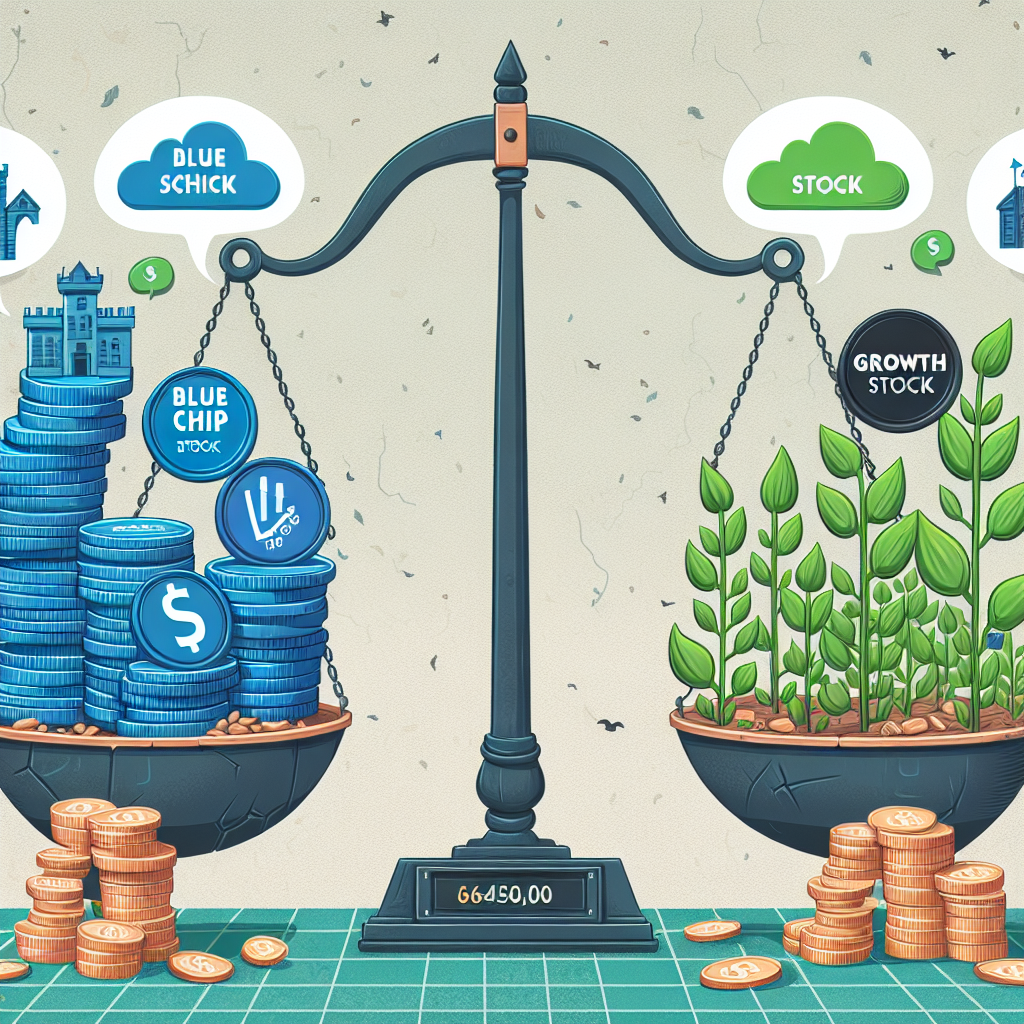In the intricate universe of investing, an understanding of different types of stocks is vital for formulating successful investment strategies. Two common types of stocks that investors often encounter are Blue Chip Stocks and Growth Stocks. They are fundamentally different in their characteristics and investment appeal. So, what is the difference? Let’s dig deeper into the nature of Blue Chip Stocks vs Growth Stocks to comprehend their distinguishing features better.
Understanding Blue Chip Stocks: Stability and Reliability
Blue Chip Stocks are shares of large, well-established, and financially sound companies with a history of reliable performance. These companies often have a national or international presence, along with a robust market share. They are known for their ability to operate profitably in challenging economic conditions, thereby providing a stable investment opportunity. Companies like Microsoft, Apple, and Johnson & Johnson fall into this category.
Blue Chip Stocks typically offer consistent dividends to their shareholders, which makes them attractive to investors who prioritize income and stability over high growth. Although they might not offer the most exciting or highest returns, they are considered safer investments due to their steady performance and resilience in market downturns. This is why, for conservative investors seeking long-term, dependable returns, Blue Chip Stocks form an integral part of their portfolios.
What is the difference when it comes to Growth Stocks? To answer this, it’s crucial that we understand what Growth Stocks are and the kind of investment potential they offer.
Growth Stocks: High Potential, High Risk
Growth Stocks belong to companies that are expected to grow at an above-average rate compared to other firms in the market. These companies reinvest their earnings into expansion, acquisitions, or research and development, rather than paying out dividends. Growth Stocks are typically associated with high-tech industries, but any company with a robust growth strategy can be considered a Growth Stock. Examples include Amazon, Tesla, and Netflix.
However, investing in Growth Stocks carries a higher level of risk. Their prices are often driven by future earnings expectations, and any negative news or missed expectations can lead to significant price drops. Furthermore, since these companies do not usually distribute dividends, the only potential for return is through a rise in the stock price. Therefore, Growth Stocks are generally suitable for risk-tolerant investors seeking high return potential.
While Growth Stocks might not provide the stability of Blue Chip Stocks, they offer the allure of substantial returns. So, what’s the difference? The difference between Blue Chip Stocks and Growth Stocks essentially boils down to stability versus growth potential and risk tolerance versus income preference.
In summary, the difference between Blue Chip Stocks and Growth Stocks lies in their risk-reward trade-offs. While Blue Chip Stocks offer stability, reliability, and regular income through dividends, Growth Stocks offer high potential returns at a higher risk. An investor’s decision to invest in either type of stock depends on their financial goals, risk tolerance, and investment horizon. By understanding these differences, investors can make an informed decision about which stocks best suit their investment strategy.












